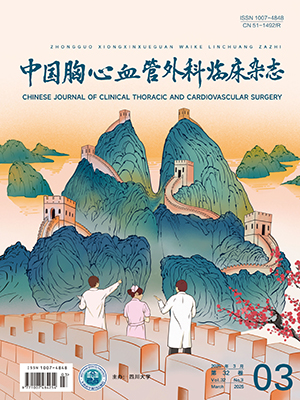| 1. |
Corry RJ, Winn HJ, Russell PS. Primarily vascularized allografts of hearts in mice. The role of H-2D, H-2K, and non-H-2 antigens in rejection. Transplantation, 1973, 16(4):343-350.
|
| 2. |
Plenter RJ, Zamora MR, Grazia TJ. Four decades of vascularized heterotopic cardiac transplantation in the mouse. J Invest Surg, 2013, 26(4):223-228.
|
| 3. |
何莹, 宫念樵. 心脏移植动物模型的构建. 实用器官移植电子杂志, 2016, 4(2):88-92.
|
| 4. |
郁雷, 高丽. 小鼠腹部心脏移植模型建立及并发症预防. 中国胸心血管外科临床杂志, 2014, 21(2):249-252.
|
| 5. |
单忠贵, 马春野, 廖崇先, 等. 小鼠腹腔异位心脏移植模型制作技术的改进. 吉林大学学报(医学版), 2009, 35(1): 188-190.
|
| 6. |
陈心足, Wang SJ, Zhou C, 等. 同种异体小鼠腹腔异位心脏移植模型的学习曲线. 中国胸心血管外科临床杂志, 2015, 22(9): 879-882.
|
| 7. |
陈义发, 尹辉, 梁宾勇, 等. 两种异位心脏移植小鼠模型的建立和比较. 中国实验动物学报, 2010, 18(1):17-20.
|
| 8. |
周景师, 窦科峰, 孙凯, 等. 两种小鼠异位心脏移植模型的复制及比较. 医学研究生学报, 2003, 16(9):653-655.
|
| 9. |
Chen ZH. A technique of cervical heterotopic heart transplantation in mice. Transplantation, 1991, 52(6): 1099-1101.
|
| 10. |
Gong W, Thornley T, Whitcher GH, et al. Introduction of modified cervical cardiac transplant model in mice. Exp Clin Transplant, 2012, 10(2):158-162.
|
| 11. |
Fang J, He L, Wang SQ, et al. A simplified two-stitch sleeve technique for arterial anastomosis of cervical heterotopic cardiac transplantation in mice. Am J Transl Res, 2013, 5(5): 521-529.
|
| 12. |
陈文伟, 杨亦荣, 夏鹏, 等. 小鼠颈部异位心脏移植手术的改良. 温州医学院学报, 2011, 41(3): 252-254.
|
| 13. |
柳祎, 孙宗全. 小鼠颈部异位心脏移植技术的改进. 华中科技大学学报(医学版), 2003, 32(5): 522-525.
|
| 14. |
Ratschiller T, Deutsch MA, Calzada-Wack J, et al. Heterotopic cervical heart transplantation in mice. J Vis Exp, 2015, (102): e52907.
|
| 15. |
Oberhuber R, Cardini B, Kofler M. Murine cervical heart transplantation model using a modified cuff technique. J Vis Exp, 2014; (92): e50753.
|
| 16. |
张向辉, 刘晓萍, 宋丽绅. 介绍一种改良的小鼠颈部心脏移植模型建立方法. 山东医药, 2014, 54(21): 29-32.
|
| 17. |
刘琛, 王斌, 王春生. 单人袖套法建立小鼠颈部心脏移植模型. 上海医学, 2013, 36(5): 446-448.
|
| 18. |
Matsuura A, Abe T, Yasuura K. Simplified mouse cervical heart transplantation using a cuff technique. Transplantation, 1991, 51(4): 896-898.
|
| 19. |
高开柱, 孙宗全, 杜心灵, 等. 套管法建立小鼠颈部心脏移植模型的探讨. 华中科技大学学报(医学版), 2006, 35(5): 638-640.
|
| 20. |
Niimi M. The technique for heterotopic cardiac transplantationin mice: experience of 3000 operations by one surgeon. J Heart Lung Transplant, 2001, 20(10): 1123-1128.
|




